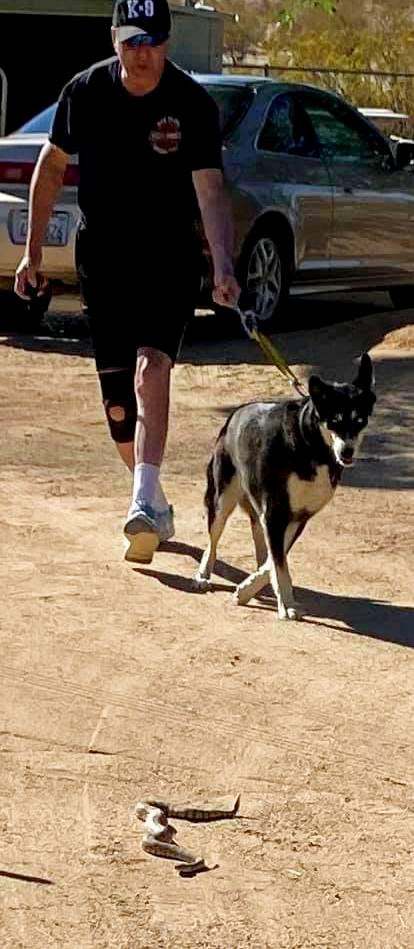
Why K9 Rattlesnake Aversion Training Saves Dogs’ Lives
By Philip Bonafede
Imagine your dog gets bitten by a rattlesnake. The venom injected by the fangs takes a few minutes to start a tremendous amount of pain and discomfort. Soon after swelling begins in the area of the bite, your dog begins exhibiting the obvious signs that something extremely unpleasant is happening to them. Best to get them to the vet within an hour of this bite to minimize the damage, prolonged pain and recovery time associated with a rattlesnake bite.

Now, let’s review what just happened and explore a logical solution. A rattlesnake bite does not cause the dog instant pain; therefore, the dog does not understand that the rattlesnake caused the pain. Once the dog has recovered, the dog will go right back out and find another rattlesnake and go in for another curious close encounter, which will result in another bite. Dogs do not learn from a rattlesnake bite.
So why does a K9 rattlesnake aversion class work? Technology, timing, and psychology. A professional K9/Rattlesnake handler will patiently wait for the moment when the dog stares at and acknowledges the rattlesnake, then moves in too close! A correction is then made from a properly fitted e-collar. The collar is technology designed to correct negative behavior in dogs by rewarding with a shock to the sensitive nerves on the side of the dogs’ neck. This instant pain replaces the delayed pain of an actual rattlesnake bite. The pain delivers a powerful, instant message that this rattlesnake is bad news! The dog equates that proximity to the rattlesnake is responsible for the pain. Smart dogs get the message with one or two e-collar corrections. Some dogs just aren’t that smart and require more time and more corrections. Each dog and their personality is unique and requires a specific training approach. Some dogs are stubborn and some very passive.
A seasoned trainer will understand dog and rattlesnake psychology in order to maximize the quality of the class. The use of two rattlesnakes with complete opposite personalities provides effective training. One is not fond of humans or dogs. The other rattlesnake basically ignores dogs and humans making it appear vulnerable to the dog.
Sometimes dogs have a hard time seeing a rattlesnake and have to learn recognition. Rattlesnakes blend in perfectly with their environment. Once the trainer has completed the class the dog will have learned recognition, respect, fear, and avoidance.
I have handled rattlesnakes since 1966. I have rescued and rehomed dogs and desert wildlife for many decades. I have been a dog owner since the 1950s. For more information TEXT 760-401-4488 first (due to the high spam calls coming in these days) or email: PBDesert@earthlink.net
Facebook: Phil’s K9 Rattlesnake Aversion Class. One dog, one owner, one hour.












